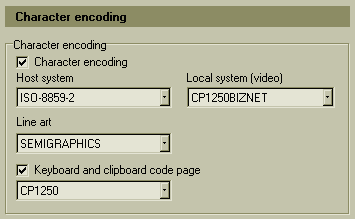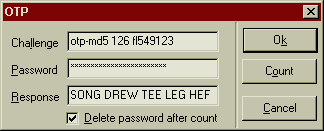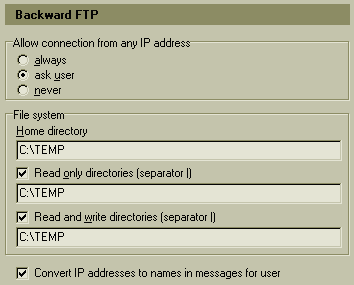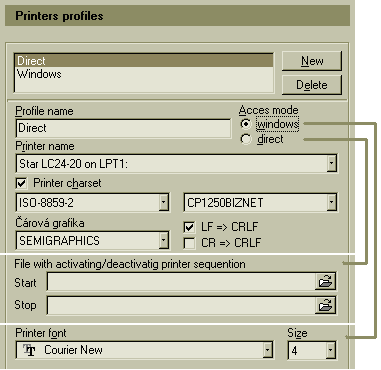SemTel specs
|
Emulation. Terminal definition is saved in an external file with 'trm' extension. User can simply modify them, if he need it. By default is SemTel shipped definition for 'ANSI' terminal, this definition is based on definition from terminfo database on Debian GNU/Linux version 1.3. Set of sequentions was gradually expanded for better compatibility with other systems. At this time is there lots of sequentions from SCO-ANSI and ANSI.SYS. SemTel is working correctly with wide rage of 'ANSI' servers. Is possible to redefine functions keys including combinations with CTRL, alt and SHIFT.
Language. I'm Czech and I'm developing SemTel in the Czech Republic, that is main reason why is SemTel's default language Czech. Is very simple to switch it to English, as showing image. All SemTel's messages are saved in text file with 'lng' extension and should be simple to translate SemTel to any next language.
User interface. It's created to be simple and powerful as is
possible. Active window area is large. On main screen is only menu
and status line. Hot keys in menu is simple to change.
Charset hacking. SemTel is able to translate from hosts code page to local code page. It's able to translate between any two pages. By default is shipped with support for this pages ASCII, CP437, CP852, CP1250, CP1250BIZNET, KeybCS2, ISO-8859-2. Translation pages are saved in binary file witch can be simple created by user with included program 'enc2'. SemTel correctly handle line art.
OTP (S/KEY). The OTP (One Time Password) system provides authentication for system access (login) and other applications requiring authentication that is secure against passive attacks based on replaying captured reusable passwords. SemTel implements OTP described in rfc2289, are implemented common used algorithms MD4 (rfc1320) and MD5 (rfc1321), algorithm SHA1 isn't implemented.
SSL. SSL is Secure Socket Layer, this protocol was developed by Netscape. SemTel using free implementation written by Eric Young. SSL libraries are compiled as separated DDL which can be downloaded. In libraries isn't included cipher IDEA. But there is used RSA a RC4 algorithms, usage of that should be problematic in USA. User can compile its self dll from Eric Young's source code. Local FTP server. It's building to be simple as is possible. It will help you, if you need to transport files from host to local system or vice versa and on host isn't running FTP server (e.g. from security reasons). It allow only one user at one time, this limitation prevents attacks to your local computer. Is possible to specify folder for read-only and for read-write.
Printing. SemTel can redirect output to printer if server require it. This ability allows you to print from your host system application comfortable as from local application. Is possible print in windows mode when windows fonts are used or in direct mode when printers fonts are used. User can simple predefine 'printer profiles' for easy select one before printing.
Running on LAN. SemTel can work with two ini files first is called main and second local. In main ini should be a number of predefined connections by supervisor. Supervisor should too specify which parameters of connections can be changed by user. In local ini is saved connections defined by user and changes to main ini. This allows simple configuration management in LAN network. Environment SemTel implements telnet protocol options NEW and OLD ENVIRONMENT, as is described in rfc1572 and rfc1408. With this ability is possible to transport to host environment local environment (MS-DOS env.) or SemTel's variables (Local IP) or some static constants. |






